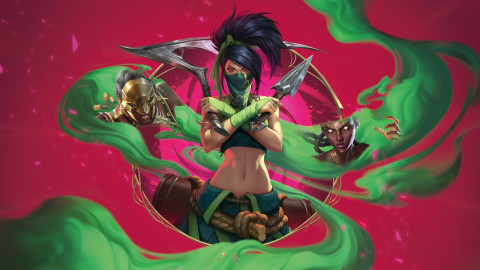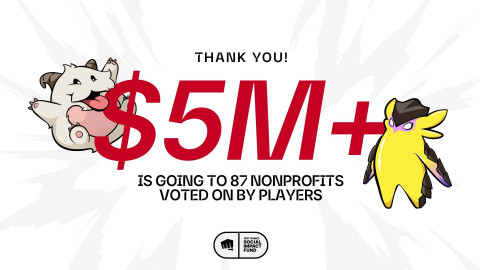
Disclaimer : The following article was written freely based on the author's opinion, and it may not necessarily represent Inven Global's editorial stance.
Over the last few years, it has become something of a joke to compare anything and everything to From Software’s Dark Souls franchise. If a game has a slightly high learning curve, it’s “like Dark Souls.” If its bosses are particularly difficult, it’s “like Dark Souls.” If its story isn’t spoon-fed to the player, it’s “like Dark Souls.” They’re reductive comparisons that get old very quickly and fail to really recognize the core pillars of Miyazaki’s series, but they also direct attention away from the games that are actually “like Dark Souls.” The story, the control scheme, and even the difficulty have, in my experience, actually had a trivial effect on whether or not a game is a true “Souls-like.” Instead, the new sub-genre of action-role-playing games is defined by how it approaches player progression.
One basic, core tenet of the Dark Souls franchise and its many subsequent imitators is a reliance on backtracking to create a sense of exploration and discovery. Back in March, my colleague Mike Rougeau traced its roots back to the “Metroidvania” games made popular in the late ‘90s, which required the use of special items and occasionally a level gate in order to progress further into the game’s main dungeon. He also argued that the more hardline approach to progression – which we’ll get to in a moment – doesn’t have to appear in every game that draws comparisons to the series, but as someone who has grown to appreciate the genre more over the last few years, I’ve found that these elements greatly contribute to my enjoyment of a Souls-like.

The Souls games have certainly used the Metroid and Castlevania games as inspiration, particularly in Dark Souls III, which locks progression behind a small doll that must be used at a very specific point. I’d argue that even more than just open-ended design, however, is a reliance on what I’ll call “foldable” worlds. These are game worlds intentionally designed to appear much larger than they actually are, when in reality, what the player sees is actually a number of smaller, narrower paths that gradually link together as doors are unlocked and platforms are activated. This not only allows for denser environments filled with more enemies and deadly traps for the player to fall victim to, but it also allows for a sense of accomplishment for little more than unlocking a single door. What appears to be a relatively minor achievement to an outsider is actually the result of hours of hard work, and it will significantly decrease the frustration of having to defeat the same group of enemies over and over again.
It’s here where the Dark Souls series’ difficulty enhances the sense of progress and accomplishment that players feel. Reaching a door is very rarely an easy task, and even without actually making it to a boss – and in less cryptic franchises, reaching a story-centric point – just making any concrete progress is a triumph. Monsters have killed you numerous times. You’ve run low on healing items. You’ve just about lost the will to live. And then you finally reach that door or activate the elevator that brings you back to a previous bonfire. Your effort has finally paid off, and you can continue to confront the horrible obstacles sure to stand in your way going forward.

There’s a tradeoff to this progress, however, that is also a key pillar of the Souls-like genre: respawning enemies. Whether the game uses bonfires, lamp posts, medical stations, or prayer shrines, the same basic rules apply. After arriving at this location to resupply your items and effectively save your most recent progress, all enemies you’ve killed, excluding bosses, will return. This can occasionally make returning to a “bonfire-like” a difficult decision, as you have to weigh the current progress you’ve made, including the experience you’ve acquired, with the prospect of fighting a particularly tough enemy a second time. Good Souls-likes balance this appropriately, with there never really being a “right” answer. We see this in The Surge, which blocks certain key areas with extremely difficult security robots, as well as Bloodborne with its enormous mobs of angry villagers. Others, like the 2D Salt and Sanctuary, understand this basic premise, but they don’t make returning to a previous area enjoyable. Instead it feels like a chore filled with far too much mindless repetition. Running through the same areas is a common activity in a Souls-like, but there must be a purpose or it will quite literally be the “definition of insanity.”
But what happens if you die while you’re in the middle of a “run?” Doesn’t it just mean you can try again? In other game genres, yes, but the third, and arguably most important pillar of the Souls-like is its namesake: “souls.” Called a variety of names depending on the individual game, the basic idea is almost always the same. As you defeat enemies, you acquire a currency that can be used at checkpoints or hub worlds to increase your character’s health, attack power, and additional statistics. While’s it’s beneficial to fight as many baddies as possible as you acquire more souls, if you’re killed, you drop them all where you died. Die again before you can retrieve them, and they’re gone forever. Usually, it’s worthwhile to at least attempt to retrieve them, but should you have died in a particularly dangerous area, it’s occasionally better to simply forget about them. As with the risk/reward combat – built around managing your stamina while also dealing as much damage as possible – it’s a compromise.

The beautiful thing about a well-designed Souls-like, however, is that even if you choose to rush through an area and approach a boss “under-leveled,” you’re never inherently doomed. Fights might take a little more skill and a few extra healing items, but with well-timed attacks and dodges, it’s still possible to defeat almost any boss. The always encouraging “git gud” insult might not help you in your fight against Bloodborne’s Father Gascoigne or Dark Souls III’s Nameless King, but it’s the truth. Your success doesn’t depend on the quantifiable, concrete statistical increases you’ve received for your character, but the experience you yourself have gained by playing the game.
As the genre continues to grow with Code Vein and possibly Lords of the Fallen 2, creators must be aware that it isn’t simply an unusually high difficulty that makes a Souls-like. Rather, the difficulty comes as a direct result of the genre’s approach to character progression and exploration. Eventually, this formula might run dry, as we’ve begun to see with rogue-likes, but until that time comes, I’m ready to play every single one.

Sort by:
Comments :0






